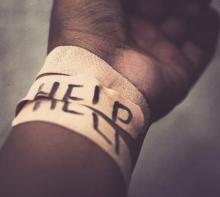Suicide continues to be a major public health problem in the United States. It is the second leading cause of death in young people aged 10-24 years, according to 2010 injury data from the Centers from Disease Control and Prevention.1 This problem disproportionately affects lesbian, gay, bisexual, and transgender (LGBT) youth. Compared to their heterosexual peers, LGBT youth are four times as likely to attempt suicide.2 In addition, almost 50% of transgender youth have attempted suicide.3
Why are LGBT youth at high risk for suicide? Antigay and antitrans stigma and discrimination against LGBT youth create a very stressful environment. For example, LGBT youth are two times more likely than are heterosexual youth to experience bullying4 because of their sexual orientation, and half of transgender youth have reported bullying because of their gender identity.3 LGBT youth tend to perceive lower levels of parental support than do heterosexual youth.5-8 A combination of harassment from peers and decreased perceived support from families increases the risk for suicide in LGBT youth.
However, there are factors that can reduce this risk. LGBT youth whose parents reject their sexual orientation or gender identity are eight times as likely to be suicidal,3,9 while in contrast, LGBT youth whose parents are more accepting are less likely to be suicidal.10 These studies underscore the importance of social support in reducing the stress from antigay and antitrans discrimination, and therefore, play a role in preventing suicide.
Health care providers are another source of support for LGBT youth. They can play a role in providing education and preventing suicide in this population because many victims of suicide have visited a health care provider before attempting to kill themselves.11 It is important for providers to screen for suicide in their patients. Although there is no lab test for suicidal ideation, suicidal adolescents tend to have certain risk factors. In addition to being LGBT, being bullied, and having a lack of social support, other risk factors are psychiatric illness, a history of being impulsive, alcohol and substance abuse, and most important of all, a previous suicide attempt.12
When screening for suicide risk, always remember that at the beginning of any visit with an adolescent, remind them about confidentiality and its limits (e.g., breaking confidentiality if the patient is suicidal). Although this appears counterintuitive, it actually builds rapport between you and the patient. If you don’t discuss the limits of confidentiality beforehand and have to break it because the patient is suicidal, the patient is less likely to tell you again in the future. Once you suspect suicidal ideation based on the above risk factors, you can ask:
• Have you thought about ending your own life or would you rather be dead?
• Have you done something to harm yourself or to end your life?
• Have you considered ways to end your own life?12
Some clinicians have expressed concern over asking about suicide in their adolescent patients, but doing so does not induce suicidal thoughts.13 If a patient does express any of the above, the clinician must then inquire about other risk factors that increase the individual’s chances of completing suicide. The American Association of Suicidology has listed several warning signs of imminent suicide, which can be remembered with the acronym IS PATH WARM. This stands for Ideation, Substance use, Purposelessness, heightened Anxiety, feeling Trapped, feeling Hopeless, Withdrawal from friends and family, uncontrollable Anger, engaging in Reckless behavior, and dramatic Mood changes.14
If a patient threatens to kill him/herself, has a specific plan to do so, or speaks about death and suicide, then the clinician must act immediately. Although sending a patient to the emergency department is the safest option, it is not the only option. If a good support system is present, and the patient lives in an environment where he or she does not have the means to carry out a suicide (e.g., there are no guns in the home), then the clinician can create a safety plan for the patient. A safety plan is different from a “no suicide contract.” A no suicide contract is a written commitment that the patient does not engage in suicidal behavior. Many experts caution against a no suicide contract because it can create a false sense of security for the clinician and does not address the strategies needed to combat feelings of suicidality.15,16
Usually with a safety plan, the clinician and the patient identify several people the patient can contact if the patient feels suicidal. In addition, the clinician and the patient can discuss ways the patient can cope with his/her feelings or distract himself/herself from suicidal thoughts (e.g., going out for a walk, watching a movie, etc.). Finally, if these methods fail, patients are provided with emergency hotlines or directed to the emergency department. The Suicide Prevention Resource Center has a template of a patient safety plan.



